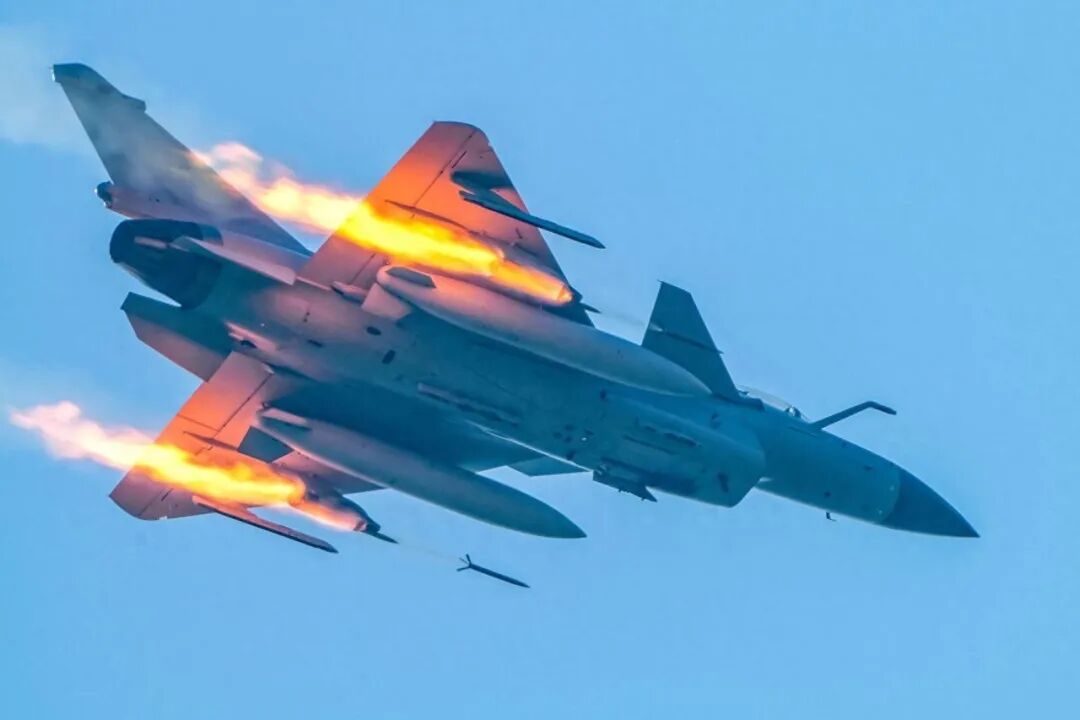16 New Orders for J-10C! Is India Under Pressure?
Pakistan Expands Military Again, Challenging American Fighter Dominance
It must be said that Chinese fighter jets are “going head-to-head” with the United States on the global stage! Reports from Pakistan indicate that they will add 16 J-10C fighter jets to their procurement, marking another significant move following last year’s introduction of the first batch of aircraft.
Looking at the latest military developments, I can’t help but ask: Is Pakistan’s additional order a routine military upgrade or a strategic deterrent against India? The pressure on India is likely quite significant!
J-10C Goes Global, Many Countries Queuing to Purchase
In recent years, the international “circle of friends” for the J-10C has been rapidly expanding.
Colombia—fire in America’s backyard! During President Petro’s visit to China, China offered extremely attractive conditions: 24 J-10CEs at a unit price of only $40 million! This is the first time Chinese fighter jets have stepped into the Americas, and Washington is likely to be unsettled.
Pakistan is already a loyal user of the J-10C and is now increasing its orders.
Egypt and Bangladesh are also waiting in line.
300 aircraft—this is the current potential global order scale for the J-10C.$24 billion market is enough to keep Boeing and Lockheed Martin executives awake at night, right?
Cost-Performance King, India’s “Rafale” Looks Dull
Why is the J-10C so popular in the international market?

One word: cheap!
Two words: easy to use!
Three words: cost-performance ratio!
Look at the French “Rafale” fighter jets purchased by India, with a unit price as high as $280 million! Meanwhile, Pakistan’s introduction of the J-10C only costs $55 million, and Colombia’s offer is even lower at $40 million.
This price difference, isn’t it just a way to fleece the taxpayers?
But cheap doesn’t mean low capability. The J-10C is equipped with an active phased array radar that has a detection range of over 240 kilometers, capable of tracking 15 targets simultaneously and attacking 4. This performance is also above average among Western counterparts.
Indo-Pak Air Combat Confirmed! J-10C Achievements Shine
The tense situation at the India-Pakistan border is a “touchstone” for testing the J-10C’s combat capabilities.
According to reports, in recent air combat, the Pakistan Air Force’s J-10C successfully shot down multiple Indian aircraft, including the capable “Rafale” and Su-30MKI. Although India has remained tight-lipped about this, Western intelligence officials have confirmed some of the results.
Alas, the expensive “Rafale” bought at a high price ended up being schooled by the “cost-performance king” J-10C? The Indian Ministry of Defense must be feeling quite embarrassed.

Is India Anxious? They Probably Can’t Sit Still
Facing Pakistan’s continuous expansion of the J-10C fleet, it would be strange for India to remain calm.
As more neighboring countries equip themselves with Chinese fighter jets, India’s air superiority is being eroded.
How will Modi’s government respond? It seems there are only two paths:
One is to desperately upgrade existing equipment, but India’s defense budget is already stretched thin.
The other is to seek more advanced fighter jets from the West, but that price… just thinking about it makes Indian taxpayers hurt.
The key point is that the J-10C has already proven itself in actual combat. This is not a military exercise, not a simulation, but a real-life confrontation! The Indian military is likely having sleepless nights reassessing its air defense strategy.
Chinese Military Industry Quietly Changing the Global Military Power Map
The successful international debut of the J-10C is not just a business deal, but a concentrated display of China’s military industrial strength.
From the customer list, it can be seen that Chinese fighter jets are opening up an “air silk road” from Asia to South America.

Chengdu Aircraft Industry Group’s annual production capacity is only 40-50 aircraft, and the existing orders will take 6 years to fully deliver, and they are even planning to set up overseas factories. This production pressure must be envied by Boeing and other Western military giants!
We also cannot avoid the fact that the international market for military equipment is being reshaped by the export of Chinese fighter jets— the era of American and European monopoly is over.
A Few Thoughts, Also Future Trends
What do you think? Here are three simple points.
1. Cost-Performance Ratio Determines the Market
Under economic pressure, more and more countries will choose a “good enough” defense strategy. The J-10C perfectly fills this market gap— not seeking the best, but seeking what is suitable.
2. Real Combat Verification is the Gold Standard
The India-Pakistan conflict has given the J-10C “real combat certification,” which is more powerful than any publicity. In the future, more countries will turn to weapon systems that have been battle-tested.
3. Geopolitics is Shifting Towards Multipolarity
Colombia’s willingness to introduce Chinese fighter jets in America’s backyard was unimaginable ten years ago. The traditional military influence map is being broken, and a new order is forming.
Finally, for India, these 16 new orders may just be the beginning. As more neighboring countries equip themselves with Chinese weapons, the Modi government must rethink: should they continue to spend heavily on Western equipment or seek more cost-effective alternatives?
Regardless, the rules of the game in the global military equipment market have been completely rewritten by the J-10C.